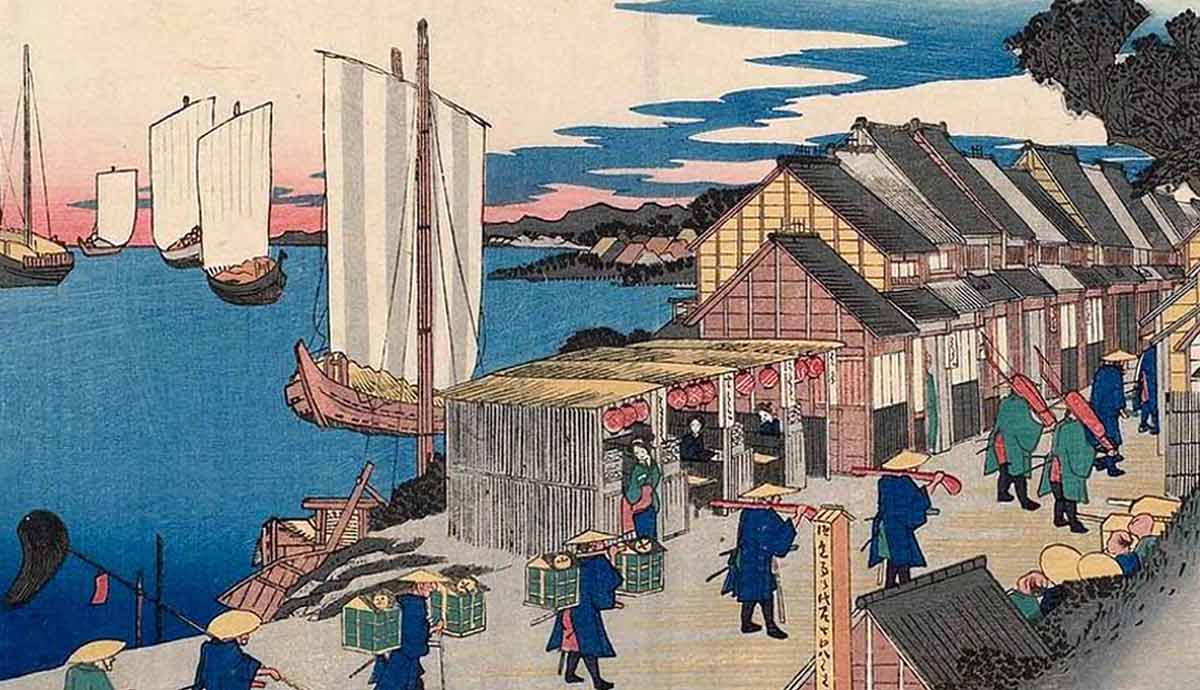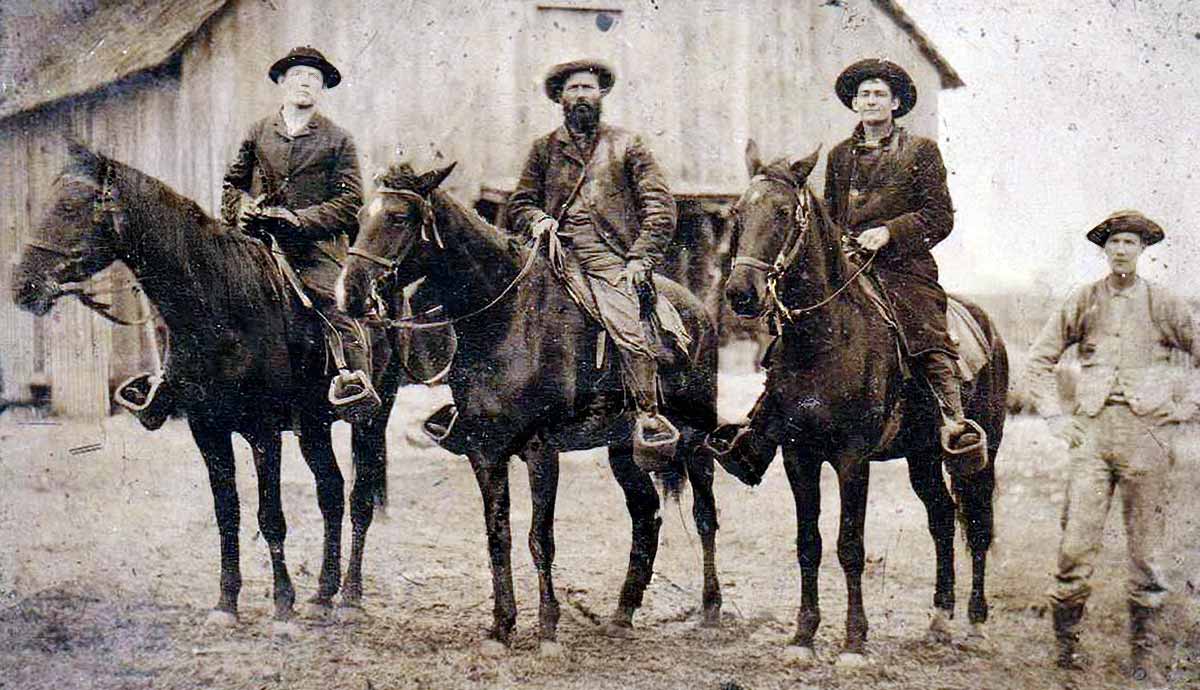
Japan’s Tokaido Road existed as a significant trade route connecting Kyoto and Edo (now Tokyo). Used for several hundreds of years, the Tokaido or “Eastern Sea Road” became especially famous during the Tokugawa Era from 1600 until the mid-1800s. Roughly 500 kilometers long, the Road enabled better communication, commerce, and travel. Travelers from all walks of life used the Road, including samurai, pilgrims, daimyo, and merchants. As you’ll discover, Tokaido Roads allowed Japan to change in unexpected ways.
When Was Tokaido Road Finally Built?

Officially, with the construction of the last post station in 1624, the Tokaido Road received its name from the Tokugawa Bakufu, the Shogun’s military government. But roads, paths, and trails along the same route had always been in use. The twenty years of improvements after 1600 only put a name on all these routes. Travelers used these unofficial routes as far back as the Heian period (794-1185).
What Made the Tokaido Road So Important?

The importance of the Tokaido Road grew for political control, commerce, and cultural interaction. Before this, for nearly 100 years, civil wracked Japan until Ieyasu Tokugawa prevailed. As Shogun, he ordered improvements and maintenance along the Tokaido Road’s length. Now his Shogunate could better keep tabs on the daimyo, or nobles, as they traveled along the Tokaido as part of the sankin kotai system. Bakufu rules required the daimyo and all travelers to show official papers granting permission to travel.
Commerce grew fast on the Tokaido as merchants used the road to sell wares or services. Inns and hostels sprung up to feed, entertain, and take in the travelers. Thus, local towns and villages prospered, as weary people spent their money. As the years rolled past, Japan became peaceful, and the Tokaido spread Edo’s cultural influence far and wide. Famous artists like Hiroshige painted life along the Tokaido, especially with his “Fifty-three Stations of the Tokaido Road” paintings.
How Did the Tokugawa Control the Tokaido?

The Tokugawa Bakufu strictly controlled who could travel, especially to and from Edo, now Tokyo. To help keep control, the Bakufu built checkpoints, or “sekisho,” along the road to check travelers’ documents. They also built post-stations called “shukuba”-selected towns to provide shelter and food. Both helped keep a further watch for trouble or smugglers. Among those rules one required women to travel with a male companion, never alone. Nearer to Edo, Bakufu officials worried about women trying to escape, especially from daimyo families.
Who Were the Travelers on the Tokaido?

Besides the usual daimyo and merchants, the Tokaido saw people from all of Japan’s classes. These included pilgrims traveling between sacred sites such as Mount Fuji or various Shinto shrines. Similarly, monks commonly traveled to Tokaido to teach their beliefs. Unlike the others, monks depended on the generosity of the local towns. Artisans, like the famous Hiroshige and performers touring, used the Tokaido Road to perform at events in different regions.
Where Did the Tokaido Road Begin and End?

Both ends of the Tokaido Road connected the Imperial City Kyoto and Edo, the Bakufu’s de facto capital Edo. The Tokaido started at the Nihon-bashi Bridge in Edo at the first of 53 stations. Travelers typically traveled by foot or hired a palanquin called a kago. The road wound its way through many different settings, such as scenic coastal areas, the steep mountains around Hakone, and postal stations that grew into towns. Key stops to recuperate included Shizuoka, famed for its tea, and Numazu’s ocean scenery. The Tokaido Road ended in Kyoto at the Sanjo Ohashi Bridge for those who ventured the nearly 200 miles.
Who Wrote About the Tokaido Road?

The celebrated ukiyo-e artist Utagawa Hiroshige (1798-1858) woodblock prints, or ukiyo-e, captured life on the Tokaido. His travels here inspired “The Fifty-three Stations of the Tokaido.” The prints depict that station’s daily life, scenery, and what made that location unique. Two of the most well-known prints are Kanaya, displayed crossing the Oi River, and Shono, with its rain squalls and dramatic weather.
Why Did the Tokaido Road Change Japan Dramatically?

The Tokaido Road’s route helped it shape Japanese culture. With Edo’s rise as the center of power, culture, and influence, people came there from all over Japan. The Tokaido Road helped spread those changes. A great example is just look at Edo’s Japanese dialect. After 1600, the dialect became important under Bakufu’s control by being associated with the daimyo and administration. The Tokaido spread ideas and knowledge, too. Its growing importance as a pipeline from regular traffic between so many places or people meant change was inevitable.










